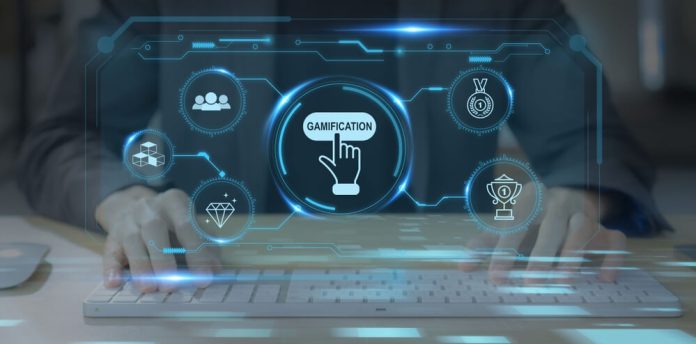
Gamification is transforming the modern workplace by integrating game mechanics into everyday tasks, making work more engaging, motivating, and productive. By leveraging elements such as rewards, challenges, and competition, organizations can drive better performance, enhance learning, and create a more enjoyable work environment.
What Is Gamification?
Gamification takes the essence of games—elements such as competition and challenges—and applies it to non-game environments to increase engagement and incentives. Web-based word game Wordle is an example of how gamification has exploded in popularity over the last few years by incorporating game-like mechanics within a simple, enjoyable, and educational experience. With Wordle as an example, the once-a-day challenge creates a healthy habit, promotes cognitive skills, and fosters friendly competition. These same principles can be effectively applied to workplace gamification, making daily tasks more interactive, stimulating, and rewarding.
Gamification has become ingrained in most modern workplaces, whether it is applied through the setting of short-term goals, rewards and incentives, or point systems. In HR, gamification is used to enhance employee training, performance management, recruitment, and workplace culture by making tasks more interactive, competitive, and rewarding. Even if employees don’t realize, they experience it throughout their careers—from interactive assessments for recruitment and within onboarding tasks to employee wellness programs.
Is Gamification Misleading?
The intention is for gamification to tap into people’s natural desire for achievement, recognition, and collaboration, and ultimately to improve productivity. However, it is not always successful for every working environment. Critics claim that gamification can be misleading and often can be controlling toward workers. It can be argued that the reward systems and competition elements can set employees’ work against their colleagues and can create friction and work as a demotivator. There is also the risk that by gamifying work tasks, authenticity and meaningfulness of the work itself is reduced as employees focus on the points and reward aspects rather than the work itself.
While gamifying workplace processes successfully can enhance employee engagement and productivity, it cannot replace the fundamental factors required for a healthy working environment, such as fair pay and a positive work-life balance.
The Mechanics, Dynamics, and Aesthetics Framework
The Mechanics, Dynamics, and Aesthetics framework (MDA) defines the three necessary components of effective gamification. This framework reflects traditional game design and is used to ensure a game is interesting, balanced, and immersive.
Mechanics describes the actual functions and features of the game itself. It describes how achievements are represented, whether that be an employee leaderboard or points-based system, and explains how different processes work. Strong mechanics are essential for employees to understand how to engage.
The Dynamics are what the participants gain from participating, whether that be skills, learning lessons, or developing their teamwork. It describes the motivating factors—for instance the rewards or opportunities that occur from being involved. However, to remain a positive tool, it is important to ensure that employees don’t feel playing a game is mandatory for their careers.
By using this framework within workplace gamification processes, employers can make sure there is a balance between well-being and engagement. With a strategic approach, gamification should align with company objectives, avoid overly competitive elements that may discourage participation, ensure transparency and fairness, and focus on engagement without overwhelming staff. With efforts to gather feedback and continuously improve gamification processes, companies can best create a workplace that fosters productivity and positivity. Organizations that embrace efforts to have successful processes will have a competitive edge in employee retention, performance, and overall job satisfaction
In traditional games, aesthetics are the auditory and design elements that contribute to a player’s enjoyment. In workplace gamification, Aesthetics refers to how employees feel when taking part in workplace practices and is where gamification becomes enjoyable and meaningful rather than just a task-driven system. Aesthetics can be considered the sense of achievement element of gamification—for instance, earning shared rewards within teamwork tasks.
By applying the MDA framework effectively, organizations can design gamification strategies that are engaging, effective, and beneficial for both employees and the company.
A Strategic Approach
It is ineffective for corporations to expect employee leaderboards and points systems to spark employee motivation alone. Gamification is a strategic approach that utilizes human psychology to make a workplace more engaging and rewarding. By incorporating elements of competition, collaboration, and progression, organizations can foster a culture of continuous improvement and motivation. To ensure processes aren’t counterproductive, processes must be fair and aligned with the business’ goals. That create a balanced environment. Simply adding leaderboards or points without a clear purpose can lead to disengagement or unhealthy competition.
When implemented thoughtfully, gamification can transform routine tasks into meaningful and rewarding experiences, helping both employees and organizations to thrive. Ultimately, when done right, gamification transforms the workplace into an environment where employees feel motivated and engaged, creating greater productivity and success for both individuals and businesses.

